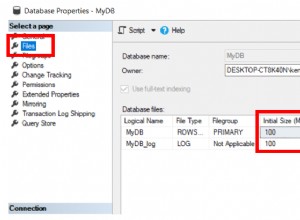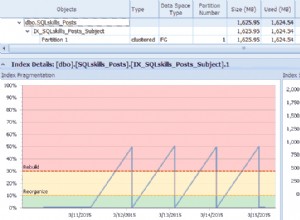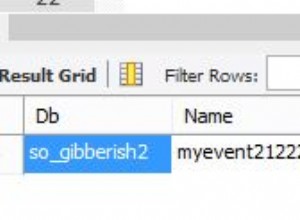विंडोज़ सेवाएँ प्रक्रियाओं के शीर्ष पर एक परत हैं; एक सेवा बनने के लिए, एक एप्लिकेशन को सर्विस कंट्रोल मैनेजर से कनेक्ट होना चाहिए और घोषणा करनी चाहिए कि कौन सी सेवाएं उपलब्ध हैं। यह कनेक्शन ADVAPI32.DLL लाइब्रेरी के अंदर हैंडल किया जाता है। एक बार यह कनेक्शन स्थापित हो जाने के बाद, पुस्तकालय सेवा नियंत्रण प्रबंधक से आदेशों की प्रतीक्षा में एक धागा रखता है, जो तब सेवाओं को मनमाने ढंग से शुरू और बंद कर सकता है। मुझे विश्वास नहीं है कि अंतिम सेवा समाप्त होने पर प्रक्रिया से बाहर निकलने की आवश्यकता है। हालांकि आमतौर पर ऐसा ही होता है, सेवा नियंत्रण प्रबंधक के साथ लिंक का अंत, जो अंतिम सेवा के "स्टॉप्ड" स्थिति में प्रवेश करने के बाद होता है, प्रक्रिया के वास्तव में समाप्त होने से पहले महत्वपूर्ण रूप से हो सकता है, किसी भी संसाधन को जारी करना जो पहले से ही स्पष्ट रूप से जारी नहीं किया गया है। ।
विंडोज सर्विस एपीआई में कार्यक्षमता शामिल है जो आपको उस प्रक्रिया की प्रक्रिया आईडी प्राप्त करने देती है जो सेवा को होस्ट कर रही है। एक प्रक्रिया के लिए कई सेवाओं को होस्ट करना संभव है, और इसलिए जब आप जिस सेवा में रुचि रखते हैं, वह प्रक्रिया वास्तव में बाहर नहीं निकल सकती है, लेकिन आपको SQL सर्वर के साथ सुरक्षित होना चाहिए। दुर्भाग्य से, .NET Framework इस कार्यक्षमता को प्रदर्शित नहीं करता है। हालाँकि, यह उस सेवा के लिए हैंडल को उजागर करता है जिसका उपयोग वह एपीआई कॉल के लिए आंतरिक रूप से करता है, और आप इसका उपयोग अपनी खुद की एपीआई कॉल करने के लिए कर सकते हैं। थोड़ी सी पी/इनवोक के साथ, आप विंडोज सेवा प्रक्रिया की प्रक्रिया आईडी प्राप्त कर सकते हैं, और वहां से, बशर्ते आपके पास आवश्यक अनुमति हो, आप उस प्रक्रिया के लिए एक हैंडल खोल सकते हैं जिसका उपयोग इसके लिए प्रतीक्षा करने के लिए किया जा सकता है बाहर निकलें।
कुछ इस तरह:
[DllImport("advapi32")]
static extern bool QueryServiceStatusEx(IntPtr hService, int InfoLevel, ref SERVICE_STATUS_PROCESS lpBuffer, int cbBufSize, out int pcbBytesNeeded);
const int SC_STATUS_PROCESS_INFO = 0;
[StructLayout(LayoutKind.Sequential)]
struct SERVICE_STATUS_PROCESS
{
public int dwServiceType;
public int dwCurrentState;
public int dwControlsAccepted;
public int dwWin32ExitCode;
public int dwServiceSpecificExitCode;
public int dwCheckPoint;
public int dwWaitHint;
public int dwProcessId;
public int dwServiceFlags;
}
const int SERVICE_WIN32_OWN_PROCESS = 0x00000010;
const int SERVICE_INTERACTIVE_PROCESS = 0x00000100;
const int SERVICE_RUNS_IN_SYSTEM_PROCESS = 0x00000001;
public static void StopServiceAndWaitForExit(string serviceName)
{
using (ServiceController controller = new ServiceController(serviceName))
{
SERVICE_STATUS_PROCESS ssp = new SERVICE_STATUS_PROCESS();
int ignored;
// Obtain information about the service, and specifically its hosting process,
// from the Service Control Manager.
if (!QueryServiceStatusEx(controller.ServiceHandle.DangerousGetHandle(), SC_STATUS_PROCESS_INFO, ref ssp, Marshal.SizeOf(ssp), out ignored))
throw new Exception("Couldn't obtain service process information.");
// A few quick sanity checks that what the caller wants is *possible*.
if ((ssp.dwServiceType & ~SERVICE_INTERACTIVE_PROCESS) != SERVICE_WIN32_OWN_PROCESS)
throw new Exception("Can't wait for the service's hosting process to exit because there may be multiple services in the process (dwServiceType is not SERVICE_WIN32_OWN_PROCESS");
if ((ssp.dwServiceFlags & SERVICE_RUNS_IN_SYSTEM_PROCESS) != 0)
throw new Exception("Can't wait for the service's hosting process to exit because the hosting process is a critical system process that will not exit (SERVICE_RUNS_IN_SYSTEM_PROCESS flag set)");
if (ssp.dwProcessId == 0)
throw new Exception("Can't wait for the service's hosting process to exit because the process ID is not known.");
// Note: It is possible for the next line to throw an ArgumentException if the
// Service Control Manager's information is out-of-date (e.g. due to the process
// having *just* been terminated in Task Manager) and the process does not really
// exist. This is a race condition. The exception is the desirable result in this
// case.
using (Process process = Process.GetProcessById(ssp.dwProcessId))
{
// EDIT: There is no need for waiting in a separate thread, because MSDN says "The handles are valid until closed, even after the process or thread they represent has been terminated." ( http://msdn.microsoft.com/en-us/library/windows/desktop/ms684868%28v=vs.85%29.aspx ), so to keep things in the same thread, the process HANDLE should be opened from the process id before the service is stopped, and the Wait should be done after that.
// Response to EDIT: What you report is true, but the problem is that the handle isn't actually opened by Process.GetProcessById. It's only opened within the .WaitForExit method, which won't return until the wait is complete. Thus, if we try the wait on the current therad, we can't actually do anything until it's done, and if we defer the check until after the process has completed, it won't be possible to obtain a handle to it any more.
// The actual wait, using process.WaitForExit, opens a handle with the SYNCHRONIZE
// permission only and closes the handle before returning. As long as that handle
// is open, the process can be monitored for termination, but if the process exits
// before the handle is opened, it is no longer possible to open a handle to the
// original process and, worse, though it exists only as a technicality, there is
// a race condition in that another process could pop up with the same process ID.
// As such, we definitely want the handle to be opened before we ask the service
// to close, but since the handle's lifetime is only that of the call to WaitForExit
// and while WaitForExit is blocking the thread we can't make calls into the SCM,
// it would appear to be necessary to perform the wait on a separate thread.
ProcessWaitForExitData threadData = new ProcessWaitForExitData();
threadData.Process = process;
Thread processWaitForExitThread = new Thread(ProcessWaitForExitThreadProc);
processWaitForExitThread.IsBackground = Thread.CurrentThread.IsBackground;
processWaitForExitThread.Start(threadData);
// Now we ask the service to exit.
controller.Stop();
// Instead of waiting until the *service* is in the "stopped" state, here we
// wait for its hosting process to go away. Of course, it's really that other
// thread waiting for the process to go away, and then we wait for the thread
// to go away.
lock (threadData.Sync)
while (!threadData.HasExited)
Monitor.Wait(threadData.Sync);
}
}
}
class ProcessWaitForExitData
{
public Process Process;
public volatile bool HasExited;
public object Sync = new object();
}
static void ProcessWaitForExitThreadProc(object state)
{
ProcessWaitForExitData threadData = (ProcessWaitForExitData)state;
try
{
threadData.Process.WaitForExit();
}
catch {}
finally
{
lock (threadData.Sync)
{
threadData.HasExited = true;
Monitor.PulseAll(threadData.Sync);
}
}
}




